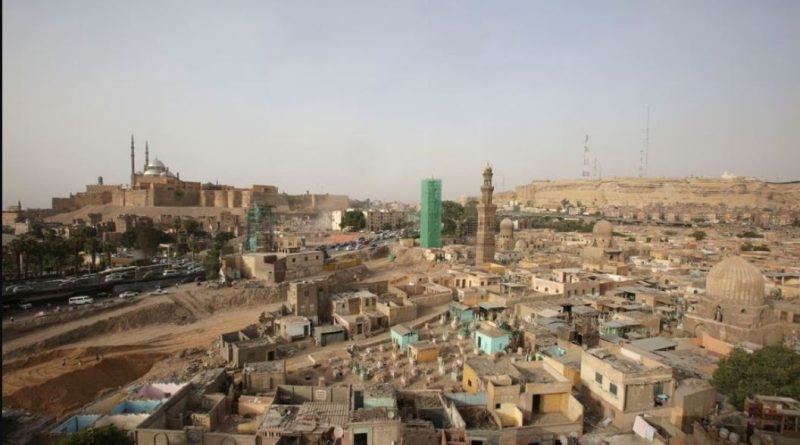Bulldozers tear into Cairo’s historic Islamic cemeteries
Cairo (Reuters) – A project to expand roads and bridges to ease congestion in Cairo has put thousands of tombs in a vast and ancient Islamic cemetery under threat, causing outcry among conservationists and family members.
Known as the City of the Dead, the cemeteries along the eastern edge of Historic Cairo have been a resting place for Egypt’s deceased since the arrival of Islam in the seventh century A.D.
The UNESCO World Heritage site extends for 10 square kilometres (3.9 square miles) and many of Cairo’s most prominent families maintain a deep bond with the cemeteries, where they continue to bury their dead.
In recent months, the government has used diggers and bulldozers to rip up thousands of graves for wide highways that will link Cairo to a new capital under construction 50 kilometres (31 miles) to the east.
Some tomb owners who want to transfer the bodies of their family members say they are given little time beforehand.
“We are standing here in the graveyard where my mother is buried, along with my grandmother, her father, and many other family members,” said Hisham Kassem, a political activist and former publisher.
“I was told a few days ago to get ready to move the bodies to another spot called al-Roubaiky and that I will be notified three or four days prior.”
After a social media outcry, President Abdel Fattah al-Sisi last week ordered that a committee be formed to “assess the situation and consider available alternatives”.
The government says it has no intention of destroying monuments designated as historic. But only 102 sites among more than 2.5 million tombs in the area have received this designation, conservationists say.
UNESCO says the area should be preserved. It will examine the case in September 2023.
Unique Architecture
Typically built around private courtyards, the tombs have been constructed over the span of Islamic history in a multitude of styles, many of them unique to Egypt, specialists say. Many contain marble, wood and metal artwork carved in ornate Arabesque.
Among the tombs are those of 19th and early 20th century politicians, including nationalist leader Ahmed Urabi, and spectacular mausoleums of Mamluk sultans who ruled Egypt from 1250 A.D. to 1517 A.D.
Also buried there is Imam el-Shafei, the founder of one of Sunni Islam’s four schools of Islamic law, who passed away in 820 A.D.
Hossam Abdel Azeem, a culture enthusiast, is working alongside other volunteers to rescue artefacts, including two 9th-century tombstones recently found in the rubble of demolished tombs.
The dead have been buried in the area since after the Arab army led by Amr ibn al-Aas brought Islam to Egypt in 640 A.D., Moaaz Lafi, a specialist in Islamic art and architecture said, adding much of that long history could now be lost.
“I imagine that in five years’ time, we won’t find anything except maybe 20% of the current City of the Dead,” Lafi said.



